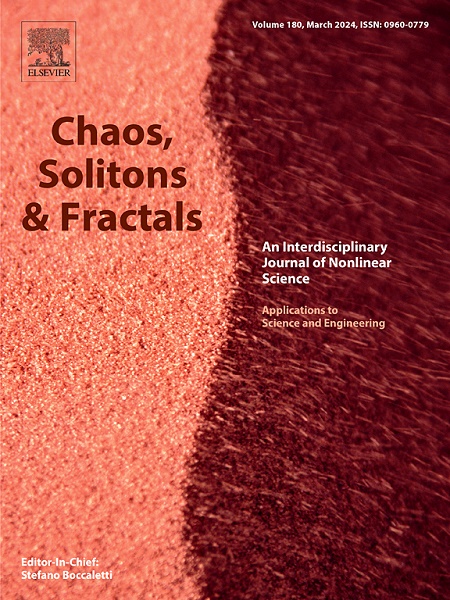Consensus effects of social media synthetic influence groups on scale-free networks
IF 5.3
1区 数学
Q1 MATHEMATICS, INTERDISCIPLINARY APPLICATIONS
引用次数: 0
Abstract
Online platforms for social interactions are an essential part of modern society. With the advance of technology and the rise of algorithms and AI, content is now filtered systematically, facilitating the formation of filter bubbles. This work investigates the social consensus under limited visibility in a two-state majority-vote model on Barabási–Albert scale-free networks. In the consensus evolution, each individual assimilates the opinion of the majority of their neighbors with probability and disagrees with chance , known as the noise parameter. We define the visibility parameter as the probability of an individual considering the opinion of a neighbor at a given interaction. The parameter enables us to model the limited visibility phenomenon that produces synthetic neighborhoods in online interactions. We employ Monte Carlo simulations and finite-size scaling analysis to obtain the critical noise parameter as a function of the visibility and the growth parameter . We find the critical exponents , and of the system and validate the unitary relation for complex networks. Our analysis shows that installing and manipulating synthetic influence groups critically undermines consensus robustness.
社交媒体合成影响群体对无标度网络的共识效应
在线社交平台是现代社会的重要组成部分。随着科技的进步,算法和人工智能的兴起,内容现在被系统地过滤,有利于过滤气泡的形成。本文研究了在Barabási-Albert无标度网络上的两态多数投票模型中有限可见性下的社会共识。在共识进化中,每个个体以1−q的概率吸收大多数邻居的意见,而不同意机会q,即噪声参数。我们将可见性参数V定义为个体在给定交互中考虑邻居意见的概率。参数V使我们能够对在线交互中产生合成邻域的有限可见性现象进行建模。我们使用蒙特卡罗模拟和有限尺寸缩放分析来获得临界噪声参数作为可见性V和生长参数z的函数。我们找到了系统的临界指数β/ν ā, γ/ν ā和1/ν ā,并验证了复杂网络的幺正关系。我们的分析表明,安装和操纵合成影响力团体严重破坏了共识的稳健性。
本文章由计算机程序翻译,如有差异,请以英文原文为准。
求助全文
约1分钟内获得全文
求助全文
来源期刊

Chaos Solitons & Fractals
物理-数学跨学科应用
CiteScore
13.20
自引率
10.30%
发文量
1087
审稿时长
9 months
期刊介绍:
Chaos, Solitons & Fractals strives to establish itself as a premier journal in the interdisciplinary realm of Nonlinear Science, Non-equilibrium, and Complex Phenomena. It welcomes submissions covering a broad spectrum of topics within this field, including dynamics, non-equilibrium processes in physics, chemistry, and geophysics, complex matter and networks, mathematical models, computational biology, applications to quantum and mesoscopic phenomena, fluctuations and random processes, self-organization, and social phenomena.
 求助内容:
求助内容: 应助结果提醒方式:
应助结果提醒方式:


